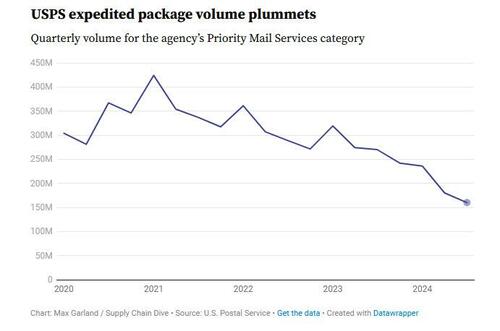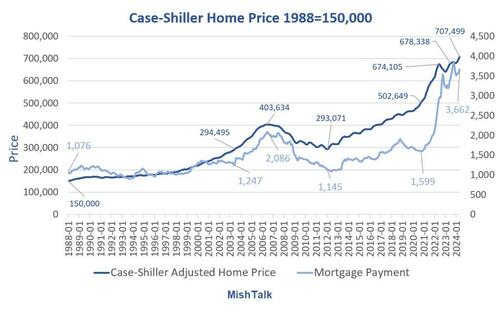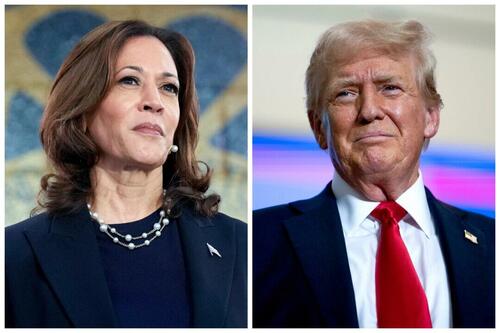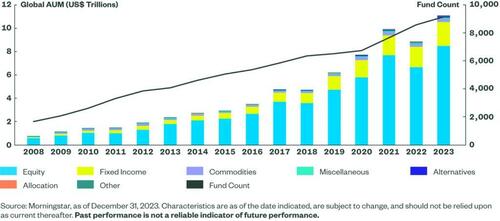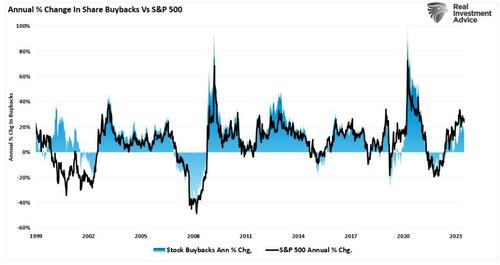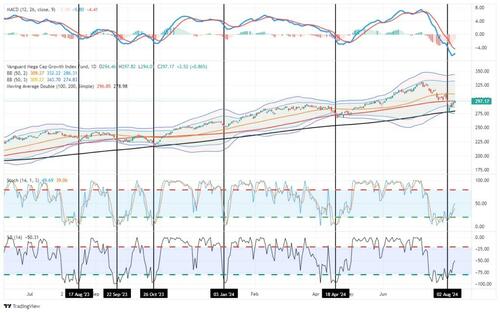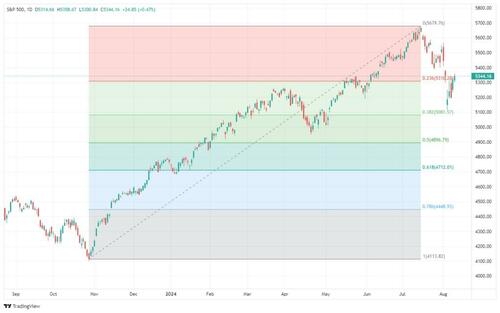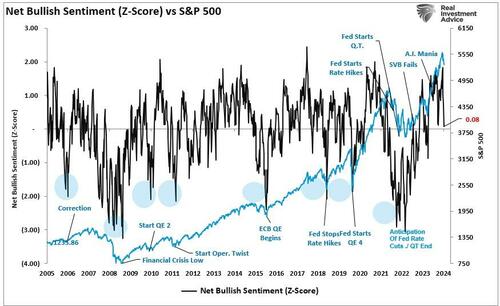Authored by Jonathan Turley,
The selection of Minnesota Gov. Tim Walz (D) as the running mate for Vice President Kamala Harris has led to intense debates over crime policy, war claims, gender identity policies and other issues.
Some attacks have, in my view, been inaccurate or overwrought. However, the greatest danger from this ticket is neither speculative nor sensational. A Harris-Walz administration would be a nightmare for free speech.
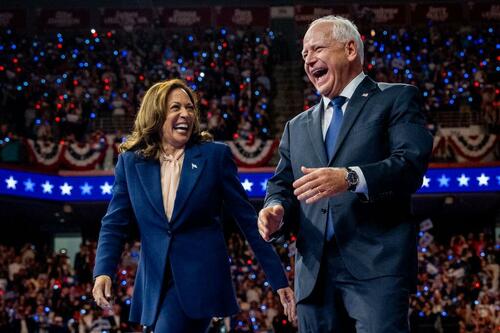
For over three years, the Biden-Harris administration has sustained an unrelenting attack on the freedom of speech, from supporting a massive censorship system (described by a federal court as an “Orwellian Ministry of Truth“) to funding blacklisting operations targeting groups and individuals with opposing views.
President Biden made censorship a central part of his legacy, even accusing social media companies of “killing people” for failing to increase levels of censorship. Democrats in Congress pushed that agenda by demanding censorship on subjects ranging from climate change to gender identity — even to banking policy — in the name of combatting “disinformation.”
The administration also created offices like the Disinformation Governance Board before it was shut down after public outcry. But it quickly shifted this censorship work to other offices and groups.
As vice president, Harris has long supported these anti-free speech policies.
The addition of Walz completes a perfect nightmare for free speech advocates. Walz has shown not only a shocking disregard for free speech values but an equally shocking lack of understanding of the First Amendment.
Walz went on MSNBC to support censoring disinformation and declared, “There’s no guarantee to free speech on misinformation or hate speech, and especially around our democracy.”
Ironically, this false claim, repeated by many Democrats, constitutes one of the most dangerous forms of disinformation. It is being used to convince a free people to give up some of their freedom with a “nothing to see here” pitch.
In prior testimony before Congress on the censorship system under the Biden administration, I was taken aback when the committee’s ranking Democrat, Del. Stacey Plaskett (D-Virgin Islands), declared, “I hope that [all members] recognize that there is speech that is not constitutionally protected,” and then referenced hate speech as an example.
That false claim has been echoed by others such as Sen. Ben Cardin (D-Md.), who is a lawyer.
“If you espouse hate,” he said, “…you’re not protected under the First Amendment.”
Former Democratic presidential candidate Howard Dean declared the identical position:
“Hate speech is not protected by the First Amendment.”
Even some dictionaries now espouse this false premise, defining “hate speech” as “Speech not protected by the First Amendment, because it is intended to foster hatred against individuals or groups based on race, religion, gender, sexual preference, place of national origin, or other improper classification.”
The Supreme Court has consistently rejected the claim of Gov. Walz. For example, in the 2016 Matal v. Tam decision, the court stressed that this precise position “strikes at the heart of the First Amendment. Speech that demeans on the basis of race, ethnicity, gender, religion, age, disability, or any other similar ground is hateful; but the proudest boast of our free speech jurisprudence is that we protect the freedom to express ‘the thought that we hate.’”
As the new Democratic vice-presidential candidate, Walz is running alongside one of the most enthusiastic supporters of censorship and blacklisting systems.
In her failed 2020 presidential bid, Harris ran on censorship and pledged that her administration “will hold social media platforms accountable for the hate infiltrating their platforms, because they have a responsibility to help fight against this threat to our democracy.”
In October 2019, Harris dramatically spoke directly to Facebook’s Mark Zuckerberg, insisting “This is not a matter of free speech….This is a matter of holding corporate America and these Big Tech companies responsible and accountable for what they are facilitating.” She asked voters to join her in the effort.
They didn’t, but Harris ultimately succeeded in the Biden-Harris administration to an unprecedented degree with a comprehensive federal effort to target and silence individuals and groups on social media.
In my new book, “The Indispensable Right: Free Speech in an Age of Rage,” I detailed how President Biden is the most anti-free speech president since John Adams. Unlike Adams, I have never viewed Biden as the driving force behind the massive censorship and blacklisting operations supported by his subordinates, including Harris. That is not to say that Biden does not share the shame in these measures. He was willing to sacrifice not only free speech but also institutions like the Supreme Court in a desperate effort to rescue his failing nomination.
The substitution of Harris for Biden makes this the second election in which free speech is the key issue for voters. In 1800, Thomas Jefferson defeated Adams, in large part based on his pledge to reverse the anti-free speech policies of the prior administration, including the use of the Alien and Sedition Acts to arrest his opponents.
With the addition of Walz, Democrats now have arguably the most anti-free speech ticket of a major party in more than two centuries. Both candidates are committed to using disinformation, misinformation and malinformation as justifications for speech controls. The third category has been emphasized by the Biden-Harris administration, which explained that it is information “based on fact, but used out of context to mislead, harm, or manipulate.”
Walz has the advantage in joining this anti-free speech ticket without the burden of knowledge of what is protected under the First Amendment.
With the Harris-Walz ticket, we have come full circle to the very debate at the start of this republic. The warnings of the Founders to reject the siren’s call of censorship remain tragically relevant today. Free speech was and remains our “indispensable right.”
As Benjamin Franklin warned, “In those wretched countries where a man cannot call his tongue his own, he can scarce call anything his own. Whoever would overthrow the liberty of a nation must begin by subduing the freeness of speech….Without freedom of thought there can be no such thing as wisdom, and no such thing as public liberty without freedom of speech, which is the right of every man.”
With her selection of Walz, Harris has decided to put free speech on the ballot in this election. It is a debate that our nation should welcome, as it did in 1800.
The Biden-Harris administration has notably toned down its anti-free speech efforts as the election approaches. Leading censorship advocates have also gone mostly silent.
If successful, a Harris-Walz administration is expected to bring back those policies and personalities with a vengeance. That could be radically enhanced if the Democrats take both houses of Congress and once again block investigations into their censorship programs.
The media has worked very hard to present Harris and Walz as the “happy warriors.” Indeed, they may be that and much more. The question is what they are happy about in their war against free speech.
* * *
Jonathan Turley is the Shapiro Professor of Public Interest Law at George Washington University. He is the author of “The Indispensable Right: Free Speech in an Age of Rage” (Simon and Schuster).



